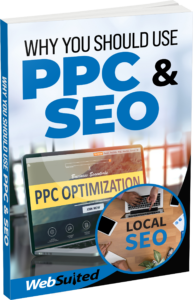How Does SEO Location Targeting Work?
SEO location targeting is a key factor for any businesses who are looking to bring in customers from certain geographical areas. In recent years, search engines like Google have worked to optimize results for specific locations based on the geographical location of where a user is searching from.
Desktop searches seem to cover larger areas, whereas mobile searches often deliver results from closer locations. Potential customers will also use specific location-optimized search words within their query. Below is a summary of location-based SEO and how it works, so you can leverage it for your business.
What is SEO Location Targeting?
SEO location targeting, also known as geo-targeting, is exactly what it sounds like, targeting specific locations using your website. It makes more sense to optimize your website for local search than targeting global traffic, if you rely on in-person customers.
SEO location targeting is a method that involves optimizing your website, pages, and content to show up for the targeted geographical area. For example, if you own a restaurant in Florida, you can optimize the restaurant’s website to appear on searches from people in the state of Florida.
Additionally, web content can target specific keywords and phrases that people use when searching for places to eat in Florida. Similar to traditional SEO, location based SEO includes keyword optimization, link building, directory and citation building, and additional factors to rank high for targeted local searches.
How does Location-Based SEO Work?
SEO location targeting is a bit different than traditional SEO because of the difference in ranking factors. Local ranking factors focus heavily on Distance, Relevance, and Prominence. Google recognizes the location of your business in regard to the location-based search query, how closely your business lines up with the intent of the query, and the social signals and reviews connected to your website. When users search for “restaurants in Florida,” they expect results with quality restaurants in the area.
Businesses can target customers from a particular location or those searching for a product or service in a certain area. Google, along with other search engines use location information to figure out where users are searching. Then the search engine will optimize results to display businesses within a close geographical vicinity.
6 Ways to Utilize Location-Based SEO
SEO location targeting can improve your business by helping it rank highly for locally-optimized searches. A major benefit of using location-based targeting to reach customers from specific locations are higher conversion rates. Below are six ways that you can utilize Google’s SEO location targeting for your business:
1. Use SEO Regional Keywords
SEO Regional Keywords, also known as location-specific keywords, refer to any search phrase including a location. Using these keywords is a powerful way to optimize your businesses’ website and pages for customers in a particular area. For example, if you sell used boats in Florida, you may include these below keywords:
-
- “used boats Florida”
- “Florida used boats”
- “best used boats Florida”
- “affordable used boats in Florida”, and others.
When creating these keywords, you should consider things like your postcode, town, and general area. SEO revolves around keywords and even more so when it comes to targeting specific geographic areas. To improve your efforts, you should also try researching the target location to understand the local vocabulary better and search patterns.
2. Use Google Business Profile
The Google Business Profile (once known as Google My Business) is a free tool for anyone looking to manage their businesses’ online presence across the web. It is important that you have a complete Google Business Profile and fill it out accurately to make it possible for people to find your business on Google Maps and Search.
To best optimize your Google Business Profile, you will need to complete the sections using your location on the landing page. Information you should be sure to include are the business’s name, short description, address, hours of operation, contact phone number, and more.
You are even able to include information about the business, reviews from previous customers, and any recent news. The Google Business Profile must be updated with clear and accurate information that searchers can use to learn more about your business. Your location also needs to be owner-verified.
3. Use Top-Level Domain (TLD)
The two main types of top-level domains are country code top-level domain and generic top-
level domain. Country-code-top-level domain (ccTLD) are two letter codes that represent a
website’s region, country or territory.
Some well-known examples of ccTLDs include .us for the United States, .ca for Canada, .cn for China, .uk for the United Kingdom, .de for Denmark, and .sg for Singapore. Country code top-level domains can be used to target international locations.
ccTLDs assist search engines in recognizing the country you are targeting or operating from. Generic top-level domains refer to common suffixes, such as .com, .org, .edu, and others. Both ccTLD and generic TLD can help you to optimize your business’s website for specific countries.
4. Join Local Directories and Forums
Google and other search engines pull location information and data from many sources. Some of the popular sources include TLDs, URLs, IP address data, web traffic, links, business profile, published content, and online directories. If you have a local business, try to get listed in relevant local directories and forums to best catch location-based searches.
Getting your business listed in these forums will make it so your business is visible across multiple platforms and searches. Ensure you accurately described your business and optimized it with location-specific content and keywords. Be sure to include essential business information such as the phone number, address, directions to the business location, and descriptions of the products and services, in order to have a successful local SEO campaign.
The objective is to build local business citations and show up in relevant map packs and location-focused searches. If possible, you should build links from other authority local businesses to your website. Having other companies in your target location mention or recommend your website can also boost your visibility and credibility.
5. Leverage Local Search Ads
Although this doesn’t directly affect SEO, Google’s geo-targeted ads can help your businesses rank for location targeting. You can utilize Google ads to show you business at the forefront of local searches for certain keywords. Local search ads bring in more store visits for businesses and include an option for customers to call your location. Ads have shown to generate results faster than SEO. Therefore, bringing the power of ads into your marketing strategy can help you obtain leads quicker, while SEO generates sustainable results over time.
To teach people even more about your business, you can use photos, descriptions, open hours, and customer reviews. Ads have a standard cost-per-click charge, so be sure to create a budget for your businesses’ local search ads online.
6. Review Your Competitors’ Profiles
Optimizing a website for a particular location requires in-depth research of the market you are targeting. It is important to observe and learn from your competitors too. If you notice another business is doing really well with its local SEO and geo-targeting, try and see what they are doing right.
You can learn a lot from your competition, especially when their business is targeting the same location as you are. Studying your competition can give you a competitive advantage and help you discover successful SEO methods to stay on top.
Google allows its users to look at other companies’ profiles and check what their keywords are. You can also look at competitor websites to learn more about their SEO content and link
strategies.
Summary
Google SEO location targeting is very important for a successful local business profile. When targeting customers from a particular location, you must optimize your website and business presence for those individuals. By using location-specific keywords, listings, and having an updated Google Business Profile you can improve your businesses performance. Also, make sure you work with a successful SEO company to make certain everything is working right. WebSuited can help you create ad campaigns and generate great results for your business.










